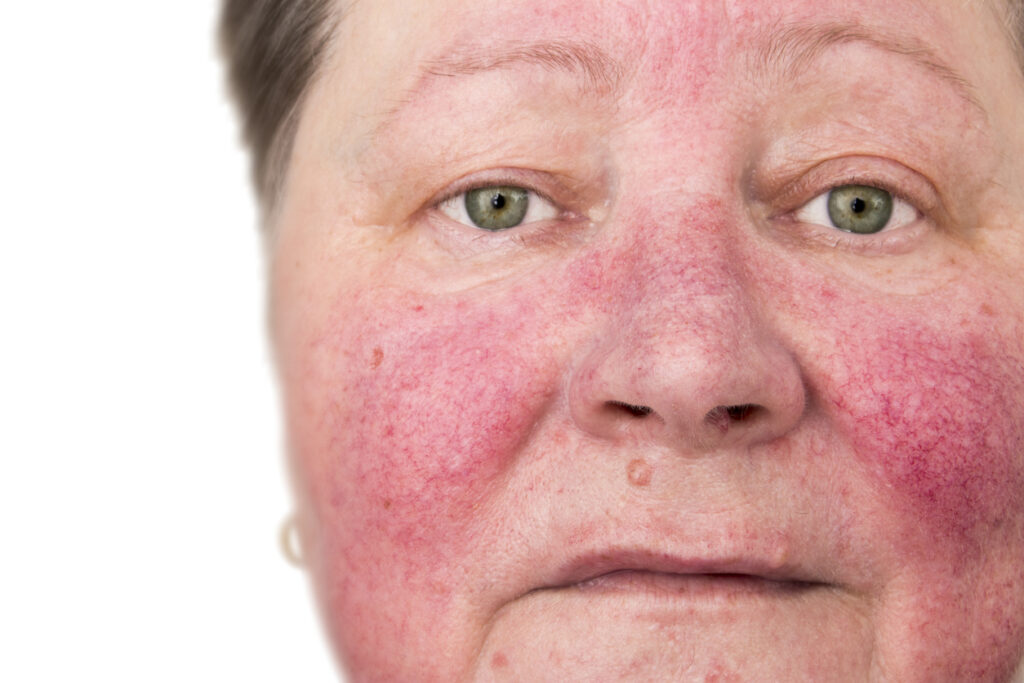Differences in body weight do not affect the efficacy of Journey’s Emrosi (minocycline hydrochloride extended-release capsules) in rosacea, according to two Phase 3 trials slated to be presented at the Society of Dermatology Physician Associates (SDPA) 2025 Summer Dermatology Conference in Washington, DC.
“This analysis demonstrated that Emrosi is body weight independent, which means it can be prescribed without regard to the patient’s body weight. This is an important attribute, as it avoids the potential for errors in dose calculations,” says Julie Harper, MD, past president of the American Acne & Rosacea society (AARS) and Owner of the Dermatology and Skin Care Center of Birmingham, AL, in a news release. “If doses were to be calculated based on body weight, the wide range of body weights in the real world would pose a challenge.”
Double-Blind, Placebo-Controlled Trial
Subjects in the double-blind, placebo-controlled Minocycline Versus Oracea (doxycycline) in Rosacea-1 (MVOR-1) and Minocycline Versus Oracea (doxycycline) in Rosacea-2 (MVOR-2) Phase 3 clinical trials were randomized in a 3:3:2 ratio to treatment with Emrosi, doxycycline 40mg, or placebo once daily for 16 weeks. The coprimary efficacy endpoints were: 1) the proportion of participants demonstrating Investigator’s Global Assessment (IGA) treatment success with Emrosi vs. placebo; and 2) reductions in total inflammatory lesion counts with Emrosi vs. placebo.
Comparisons between Emrosi and doxycycline were secondary endpoints. Sub-group analyses were conducted in patients with body weight less than or equal to the median body weight (≤MBW) and in patients with body weight greater than the median body weight (>MBW).
Of the 653 participants enrolled, 323 were randomized in MVOR-1 (including 246 [76.5%] women) and 330 were randomized in MVOR-2 (including 249 [75.5%] women). The median body weight at baseline was 83.5 kg in MVOR-1 and 83.0 kg in MVOR-2.
Superior Efficacy
Emrosi showed superior efficacy on both co-primary endpoints, in both the body weight categories, compared to placebo and doxycycline. Emrosi was generally well tolerated, with no notable between-group differences in the frequency or severity of reported adverse events.
Table: Efficacy Results from the Subgroup Analysis based on Body Weight of Participants
| Endpoint | Baseline Body Weight | MVOR-1 (N=323) | MVOR-2 (N=330) | ||||||||||
| Emrosi (n=122) |
Doxycycline (n=121) |
Placebo (n=80) |
Emrosi (n=123) |
Doxycycline (n=125) |
Placebo (n=82) |
||||||||
| Proportion of Subjects with IGA Treatment Success at Week 16 | ≤ Median | 75.5% | 51.0% | 28.2% | 58.2% | 28.1% | 29.7% | ||||||
| > Median | 56.3% | 46.9% | 35.3% | 65.0% | 33.9% | 22.6% | |||||||
| Change from Baseline in Total Inflammatory Lesion Count at Week 16 | ≤ Median | -20.4 (10.7) |
-15.0 (7.3) |
-11.7 (10.0) |
-17.7 (8.7) |
-14.5 (10.7) |
-12.0 (8.8) |
||||||
| > Median | -22.1 (11.7) |
-14.7 (10.6) |
-12.5 (8.5) |
-17.1 (7.8) |
-14.9 (10.1) |
-10.7 (11.1) |
|||||||


